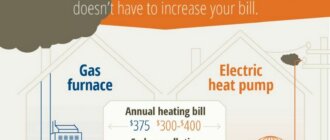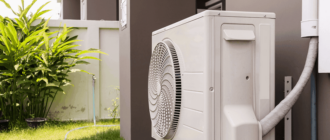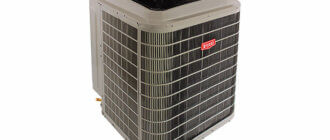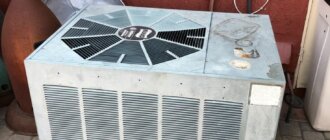How to Save Money on Your Heating Bill
Winter is just around the corner, and that means it’s time to crank up your heating system. But before you do, take a moment to consider the impact on your wallet. Heating bills can skyrocket during colder months, leaving many homeowners feeling frustrated and anxious about their finances. The good news? There are plenty of practical tips and tricks for reducing your heating bill without sacrificing comfort or warmth. In this blog post, we’ll explore everything from regular maintenance to energy-efficient appliances so you can keep cozy this winter while saving money at the same time!
Understanding Your Heating System
Understanding your heating system is essential to saving money on your heating bill. Before making any changes or upgrades, it’s crucial to understand how your current system works and what improvements can be made.
There are different types of heating systems, including furnaces, boilers, heat pumps, and radiant heating. Each has its own set of benefits and drawbacks, so it’s important to choose the right one for your home.
It’s also necessary to consider energy efficiency ratings when selecting a new heating system or upgrading an existing one. The higher the rating, the more efficient the unit will be in converting fuel into heat.
Regular maintenance and tune-ups are critical in keeping your system running efficiently. This includes changing filters regularly, cleaning ducts and vents as well as ensuring proper airflow throughout your home.
Proper insulation and weatherstripping can also help keep warm air inside during winter months. Make sure that all doors and windows are properly sealed to prevent drafts from entering your home.
Programmable thermostats allow you better control over when and how much you’re using energy for heating purposes. With this technology installed in your home, you can set different temperatures based on time of day or even room-by-room preferences – providing both comfort while reducing energy consumption at the same time!
Types of Heating Systems
When it comes to heating your home, there are several types of systems to choose from. The most common type is a forced-air system, which uses ducts and vents to circulate warm air throughout the house. This system can be powered by gas, oil or electricity.
Another option is a radiant heating system, which uses panels installed in walls or floors to radiate heat into the room. These systems tend to be more energy-efficient than forced-air systems because they don’t waste energy on ductwork.
A boiler-based heating system is another popular choice. It heats water that then flows through pipes and radiators in each room of the house. This provides an even distribution of heat throughout the space.
Geothermal systems are becoming increasingly popular as well. They use heat extracted from the ground via underground loops filled with water or refrigerant fluid.
Ultimately, choosing a heating system depends on factors such as climate and budget constraints. Consulting with a professional HVAC technician can help you determine which type of system will work best for your home’s unique needs and requirements.
Energy Efficiency Ratings
When it comes to choosing a heating system for your home, energy efficiency ratings should be one of the most important factors to consider. These ratings help you determine the amount of energy required by a particular heating system and how much it will cost to operate.
The two primary rating systems used in the United States are SEER (Seasonal Energy Efficiency Ratio) and AFUE (Annual Fuel Utilization Efficiency). The higher these ratings are, the more efficient the heating system is at converting its fuel source into heat.
For central air conditioning units, SEER ratings can range from 13-25 while AFUE ratings for furnaces typically range from 80-98 percent. It’s essential to choose a heating system with high-efficiency ratings as they consume less energy, reduce your carbon footprint and save you money on utility bills over time.
By investing in an energy-efficient heating system with high SEER or AFUE rating, you can significantly lower your household’s carbon emissions, which helps protect our environment while still keeping comfortable during winter months.
Practical Tips to Lower Your Heating Bill
Are you tired of high heating bills during the winter months? Fortunately, there are practical steps that you can take to lower your energy usage and save money. First, regular maintenance and tune-ups for your heating system will ensure it is running efficiently. This includes replacing air filters, cleaning ductwork, and checking for leaks.
Another effective way to reduce heat loss is through proper insulation and weatherstripping. Insulating attics, walls, floors, and basements can prevent warm air from escaping your home. Meanwhile, caulking or adding weatherstrips around doors and windows can keep cold drafts out.
Programmable thermostats are also a great investment towards energy efficiency by allowing you to set different temperature levels based on when you’re at home or away. Lowering the thermostat by just a few degrees can also significantly decrease your heating bill without sacrificing comfort.
Using energy-efficient appliances such as LED light bulbs or investing in Energy Star-rated products like furnaces or boilers can further reduce heating costs over time while benefiting the environment too!
Regular Maintenance and Tune-ups
Regular maintenance and tune-ups are essential to maintaining the efficiency of your heating system. It is recommended that you schedule an annual inspection with a certified technician to ensure that all components are working properly.
During the inspection, the technician will check for any leaks or clogs in the system, replace any worn-out parts, and clean debris from filters. This will help improve airflow and prevent your heating system from working too hard.
In addition to scheduling annual inspections, it’s important to change air filters on a regular basis. Depending on usage, filters should be changed every one to three months. Dirty filters can restrict airflow and cause your heating system to use more energy than necessary.
Another way to maintain your heating system is by ensuring proper ventilation around vents and radiators. Furniture or drapes blocking vents can limit airflow and cause uneven heat distribution throughout your home.
By investing in regular maintenance and tune-ups for your heating system, you can save money on repair costs while also improving its overall efficiency.
Proper Insulation and Weatherstripping
Proper insulation and weatherstripping are key to lowering your heating bill. Insulation helps prevent heat from escaping from your home, while weatherstripping keeps cold air out.
One of the most common areas that need insulation is the attic. Adding insulation to your attic can save you a lot of money in the long run by preventing heat loss through the roof. You can also insulate walls, floors and ducts to further reduce energy waste.
Weatherstripping involves sealing gaps around windows, doors and other openings where air leaks occur. This includes door sweeps, foam tape and caulk for windows.
Insulation and weatherstripping are important year-round too! Properly sealed homes not only keep warm air inside during winter months but also cool air inside during summer months.
If you’re unsure about how much insulation or weatherstripping you need it’s best to consult with an expert who can assess what will work best for your home’s unique needs.
Programmable Thermostats
Programmable thermostats are a great investment for anyone looking to save money on their heating bills. These devices can be programmed to automatically adjust the temperature in your home based on your schedule and preferences.
One of the main benefits of programmable thermostats is that they allow you to set different temperatures for different times of day. For example, if you’re away at work during the day, you can program your thermostat to lower the temperature while you’re gone and then raise it again just before you return home.
Another advantage of programmable thermostats is that they give you greater control over your heating system. With a traditional thermostat, you have to manually adjust the temperature every time you want it to change. But with a programmable thermostat, everything is automated – so all you have to do is set it up once and then let it run.
Programmable thermostats are also more energy-efficient than traditional models because they prevent unnecessary heating when no one is at home or awake. By turning down the heat during these times, homeowners can save significant amounts of money on their monthly energy bills without sacrificing comfort or convenience.
Lowering the Thermostat
Lowering the thermostat is one of the easiest and most effective ways to save money on your heating bill. Even just a few degrees can make a significant difference in your energy usage and costs.
One tip for lowering the thermostat is to do it gradually. Instead of immediately dropping the temperature by several degrees, try decreasing it by one degree at a time until you find a comfortable but energy-efficient setting.
Another helpful strategy is to adjust your thermostat based on your daily routine. If you’re away from home during certain hours, lower the temperature accordingly so that you’re not wasting energy heating an empty house.
Additionally, consider using blankets or wearing extra layers instead of relying solely on heat to stay warm. This can allow you to set your thermostat even lower without sacrificing comfort.
By making small adjustments and being mindful about how you use heat in your home, you can significantly reduce your heating bill while still staying cozy all winter long.
Using Energy-Efficient Appliances
Using energy-efficient appliances is one of the easiest ways to save money on your heating bill. Appliances like refrigerators, dishwashers, and washing machines can consume a significant amount of energy if they aren’t designed with efficiency in mind.
When shopping for new appliances, look for ones that have an Energy Star rating. This certification ensures that the appliance has been tested and meets strict standards for energy efficiency.
Additionally, be mindful of how you use your appliances throughout the day. Try to run full loads in your dishwasher and washing machine instead of small loads throughout the day. You should also set your refrigerator temperature between 37-40°F to maximize its efficiency.
Another easy way to save on energy costs is by unplugging electronics when not in use or investing in smart power strips that shut off electronics automatically when not needed.
By incorporating these strategies into your daily routine, you’ll see a noticeable decrease in your monthly heating bills while doing something good for the environment at the same time!
Investing in Energy-Efficient Heating Systems
Investing in energy-efficient heating systems can help you save money on your heating bill in the long run. While they may require a larger upfront investment, these systems are designed to use less energy while still providing the same level of comfort as traditional heating systems.
One popular option is a geothermal heat pump, which uses the Earth’s natural temperature to heat and cool your home. These pumps can be expensive to install but have been shown to reduce heating costs by up to 70%.
Another option is a high-efficiency furnace, which operates at over 90% efficiency compared to standard furnaces that typically operate at around 80%. This means it produces more heat from the same amount of fuel.
Heat recovery ventilators (HRVs) are also becoming increasingly popular for their ability to capture heat from exhaust air and transfer it back into incoming cold air. This helps maintain indoor temperatures while reducing energy consumption.
If you’re considering investing in an energy-efficient system, make sure you research different options and consult with professionals before making any decisions. It’s important to consider factors such as cost, environmental impact, and maintenance requirements when choosing a system that best fits your needs.
Case Studies: Real-Life Savings from Energy Efficiency
Real-life case studies provide tangible evidence of the benefits of energy efficiency for homeowners. These stories showcase how small changes can result in significant savings on heating bills.
One example is the Smith family, who invested in proper insulation and weatherstripping for their home. They found that their heating bills decreased by 20%, resulting in annual savings of over $500.
Another success story comes from the use of programmable thermostats by the Jones family. By scheduling temperature adjustments based on their daily routines, they were able to save up to 10% on their monthly heating costs year-round.
Investing in energy-efficient appliances also proved to be a smart choice for Mr. and Mrs. Brown. By upgrading to Energy Star-rated models, they saw a decrease in their heating bill by almost 15%.
These real-life examples demonstrate that implementing energy-efficient measures can lead to substantial cost savings for homeowners while reducing carbon footprints at the same time.
Conclusion
By following the practical tips and investing in energy-efficient heating systems, you can significantly reduce your heating bill while still staying warm and comfortable during the cold winter months.
Regular maintenance of your heating system, proper insulation, programmable thermostats, and using energy-efficient appliances are all effective ways to save money on your heating bill.
Remember that small changes can add up over time when it comes to saving money on your utility bills. By being mindful of how you use energy in your home and making smart choices when it comes to upgrading or maintaining your heating system, you can enjoy a warmer home without breaking the bank.
So start implementing these tips today and see how much you could potentially save on your next heating bill!
Recent Queries:





